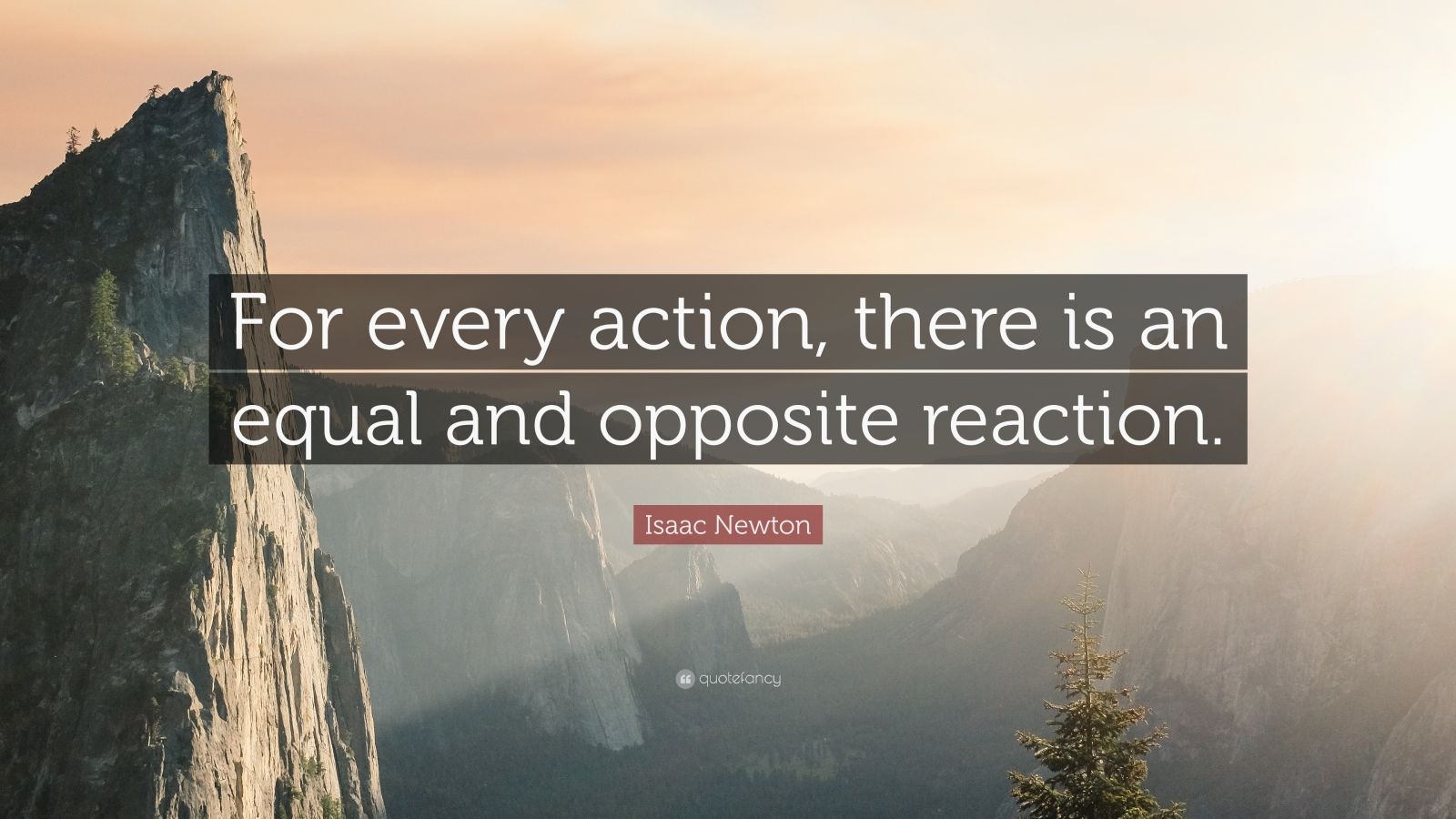


It could also be pointed out that the "law" itself is just metaphysical twaddle. Whatever you do to others will be done to you.Īnd then that moral law is generalized to all things to make the physical law:įor every action there is an equal and opposite reaction.Īlso, it could be argued that the use of actio ( ) implies a rational agent, not an abstract principle. If the golden rule is: do unto others as you would have them do unto you and you restate that as if it has force of law then you get: Translation from google: "To every action there is always opposed an equal reaction" For collisions between equal-mass objects, each object experiences the same acceleration.Newton's third law is: "Actioni contrariam semper et æqualem esse reactionem" In a collision, there is a force on both objects that causes an acceleration of both objects the forces are equal in magnitude and opposite in direction.

Since the two balls have equal masses, they will also experience equal accelerations. The rightward moving seven ball experiences a leftward force that causes it to slow down the eight ball experiences a rightward force that causes it to speed up. When the seven ball collides with the eight ball, each ball experiences an equal force directed in opposite directions. The forces are equal in magnitude and opposite in direction, yet the least massive object receives the greatest acceleration.Ĭonsider the collision between a moving seven ball and an eight ball that is at rest in the sport of table pool. In a collision, there is a force on both objects that causes an acceleration of both objects. Both club head and ball experience equal forces, yet the ball experiences a greater acceleration due to its smaller mass. They are not observing unequal forces upon the ball and club head, but rather unequal accelerations. Most observers of this collision have difficulty with this concept because they perceive the high speed given to the ball as the result of the collision. When the club head of a moving golf club collides with a golf ball at rest upon a tee, the force experienced by the club head is equal to the force experienced by the golf ball. Thus, if the colliding objects have unequal mass, they will have unequal accelerations as a result of the contact force that results during the collision.Ĭonsider the collision between the club head and the golf ball in the sport of golf. In accord with Newton's second law of motion, the acceleration of an object is dependent upon both force and mass. While the forces are equal in magnitude and opposite in direction, the accelerations of the objects are not necessarily equal in magnitude. According to Newton's third law, the forces on the two objects are equal in magnitude. Such forces often cause one object to speed up (gain momentum) and the other object to slow down (lose momentum). In a collision between two objects, both objects experience forces that are equal in magnitude and opposite in direction. Newton's third law of motion is naturally applied to collisions between two objects. Forces always come in pairs - equal and opposite action-reaction force pairs. The direction of the force on the first object is opposite to the direction of the force on the second object. The size of the force on the first object equals the size of the force on the second object. in every interaction, there is a pair of forces acting on the two interacting objects. In the second unit of The Physics Classroom, Newton's third law of motion was introduced and discussed. Newton's laws of motion govern such collisions. As in any interaction, a collision results in a force being applied to the two colliding objects. A collision is an interaction between two objects that have made contact (usually) with each other.


 0 kommentar(er)
0 kommentar(er)
